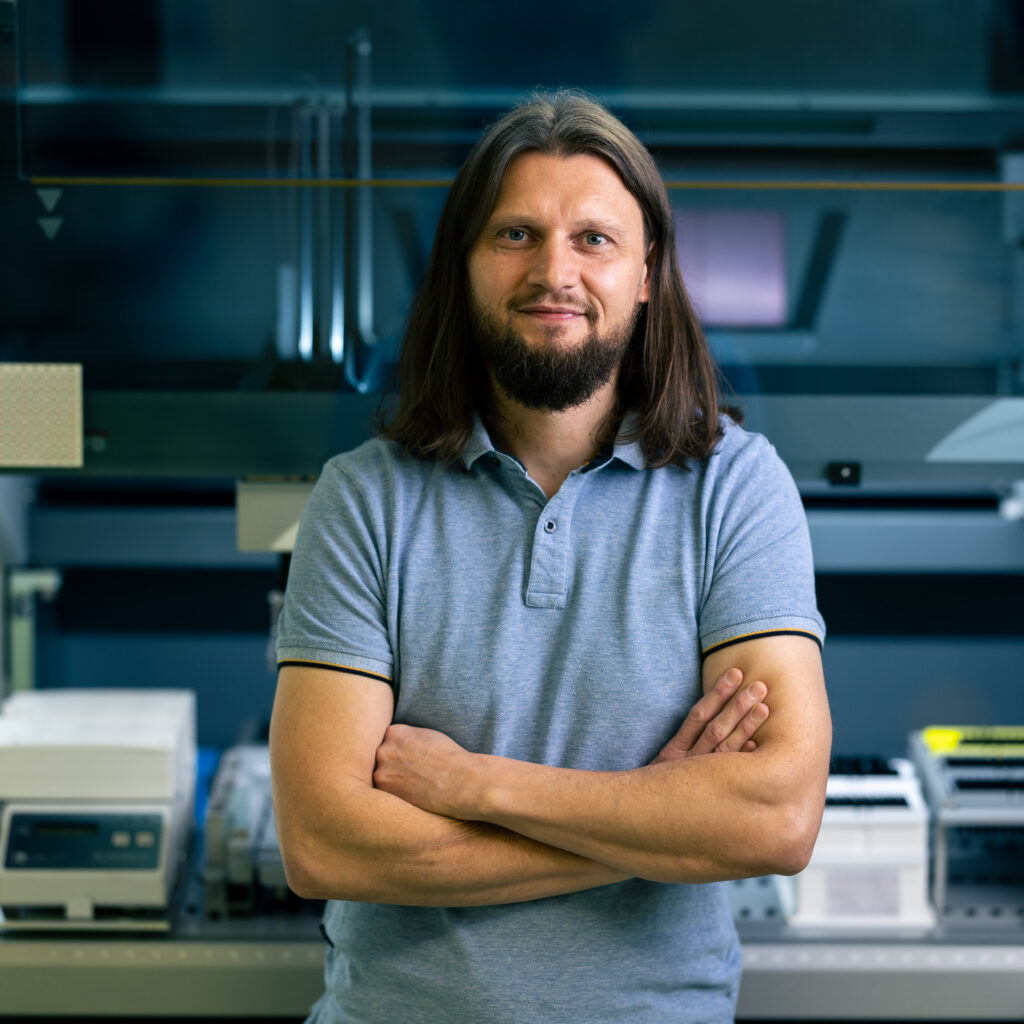I want to promote interdisciplinary interactions and search for new, unaddressed topics
Lukáš Spíchal, an expert in the chemical biology of plant hormones, has been the head of CATRIN-CRH, one of CATRIN’s three divisions, since May this year. He succeeded Ivo Frébort, who no longer sought the position.
Until now, you have led one of CATRIN’s research groups. Why did you decide to apply for the position of head of CATRIN-CRH?
As the head of the Phenotyping research group, which is interdisciplinary in its focus and staffing, I perceived a great perspective and potential for collaboration between groups at CATRIN-CRH, but also between groups across CATRIN divisions. I have tried to exploit this potential, and the successful building of these interactions is already translating into publication and project successes, which I am sincerely pleased about. My motivation for applying for the position of Division Head was therefore, among other things, to capitalise on this experience and from a leading position foster these links and stimulate the creation of new ones. I would like to see the CATRIN-CRH research groups thematically linked as much as possible in pursuit of a common research goal of responding to the challenges of food security, sustainable agriculture and climate change with innovative solutions.
Is the recent restructuring of the research groups one way towards this goal?
Yes, I felt that too much atomisation into smaller groups creates mental barriers and encourages a tendency to compete internally. This is not to the benefit of the whole. It is the removal of these barriers that can foster an awareness of mutual benefit. I merged groups where thematic or project connections already existed. In addition, I wanted to bring some groups together to form more comprehensive teams of complementary staff and become more balanced in terms of their potential towards basic and applied research.
What other tasks have you set for yourself?
I would like to further increase the grant success rate, create strategic partnerships with research institutions in the Czech Republic and abroad as well as in the commercial sphere. I would like to support the growth of young, promising scientists as much as possible. CATRIN-CRH is already a place where many students and researchers from abroad come for short or longer research stays. I will do my best to ensure that our division, as a proud part of CATRIN, helps to promote the reputation of Palacký University in the world.

You mentioned that building interactions is already translating into publishing and project successes. Can you be more specific?
A good example is the HE PATAFEST project, in which two CATRIN-CRH groups are involved. The discussions that members from quite different thematic areas were forced to have with each other during the preparation of the project, but also now during its implementation, have led to a greater mutual understanding and finding points of contact. They have generated new ideas for further joint projects, which have been submitted together, and hopefully some of them will receive financial support. In the area of publications, the link between the Phenotyping and Phytochemistry groups is certainly a good example, which has resulted in the formal merging into one research group of Plant-Environment Interactions.
The transfer of knowledge into practice is also important for CATRIN. Do you have any plans in this area as well?
Yes, the successful valorisation of new in-house knowledge is one of the key areas I want to pursue. Due to my years of experience with various forms of know-how valorisation, through applied research projects with industrial partners, licensing know-how, and setting up and running a spin-off company, I am well aware of all aspects of this process, i.e. not only that a result with commercial potential can be produced, but also what all this entails externally, as well as within the group. In this respect, I can rely on the excellent team in CATRIN’s Technology Transfer Office, with whom we are already mapping the potential of each group and working together to develop a strategy for CATRIN-CRH.
What has surprised you during your first weeks in the role and what are you most excited about?
As I have been with CATRIN-CRH since the beginning and already knew its operations from my position as leader of the research group, there were not many surprises. I am certainly happy about the positive acceptance of my vision at the level of CATRIN management and the other divisions, including their research groups, and the immediate support of the group leaders to link our topics. The first great achievement could be the establishment of a joint facility extending the biosensing research that is well underway in CATRIN-RCPTM to the crop production and food security topics addressed in CATRIN-CRH.
How do you see CATRIN-CRH now and where would you like to see it at the end of your term?
CATRIN-CRH is now in a period of necessary stabilization and adaptation to the conditions in which it was established as part of the UP and with which it has to contend. Due to our strongly project-oriented funding method, we have already demonstrated that we can obtain sufficient funding from European and national competitions. I would like to see CATRIN-CRH operate as one team, which, thanks to its multidisciplinarity, will be able to find new topics, not yet addressed at UP, that are attractive to students and young scientists from abroad. I would also like to see CATRIN-CRH remain a sought-after and successful partner for international consortia, as well as industrial partners.

